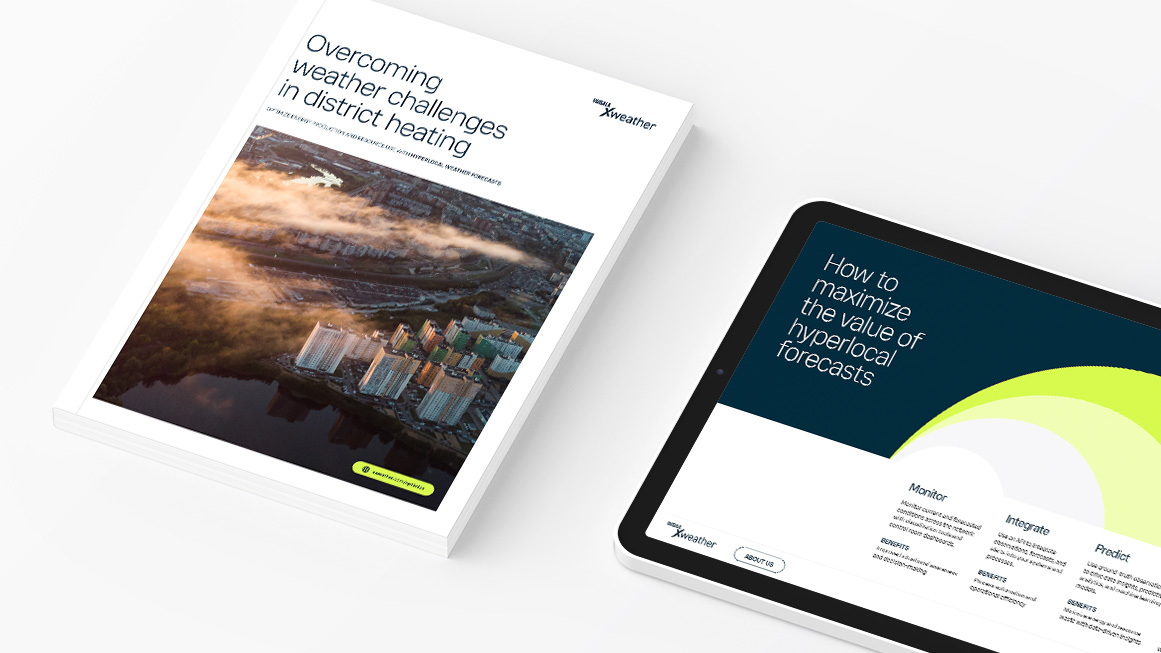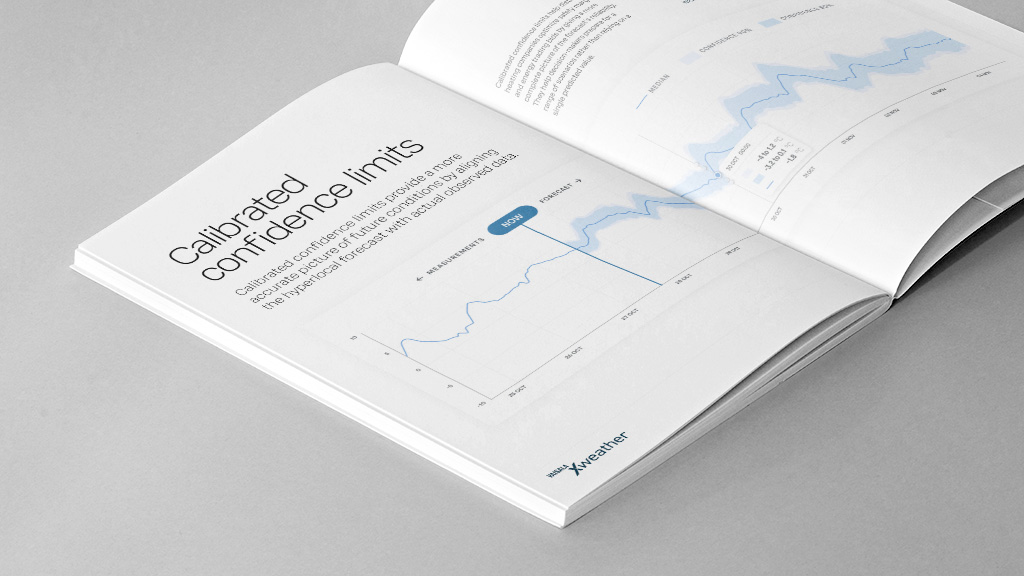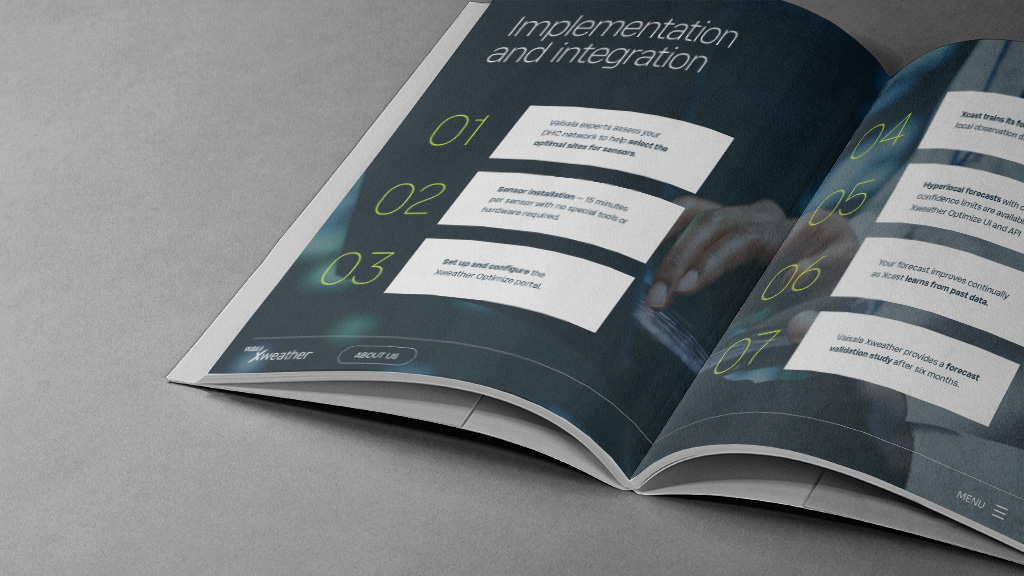
The essential guide to hyperlocal forecasting for district heating

Introduction to hyperlocal forecasting
Why traditional weather forecasts get it wrong
How hyperlocal forecasting improves accuracy
How to maximize the value of hyperlocal forecasts
Success story: 59% fewer large forecast errors

Latest advances in weather forecasting
AI-enhanced forecasting
Calibrated forecast confidence limits
Affordable IoT weather sensors
Sensor networks operated as a service

How to implement an end-to-end solution
The key components of a complete solution
Weather confidence from a single source
Implementation in seven simple steps
Projected annual savings
Get your free guide today
Traditional weather forecasts lack precision at the local level, leaving district heating companies exposed to sudden shifts in conditions.
Forward-thinking district heating companies are innovating with a hyperlocal forecasting approach that is 50% more accurate on average with up to 59% fewer large errors.
Read our 23-page guide to learn how to improve your operational efficiency, lower costs, and reduce waste with hyperlocal forecasts.
Fill in the form to access the guide.
Discover Xweather Optimize
Xweather Optimize combines sensors and software in a single service that delivers a more accurate forecast for the locations that matter to you. Optimize your energy and resource use with quality-controlled weather data and hyperlocal forecasts with calibrated confidence limits. Enjoy the benefits of a location-specific forecast without the burden of operating and maintaining your own sensor network.